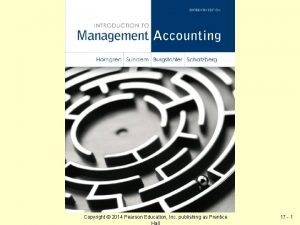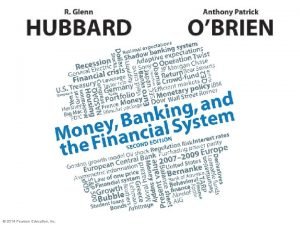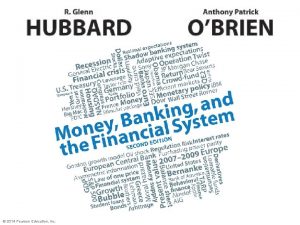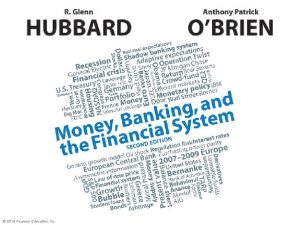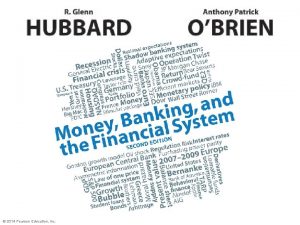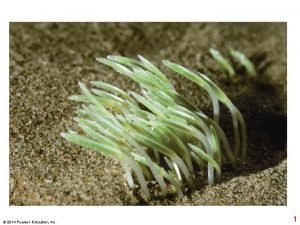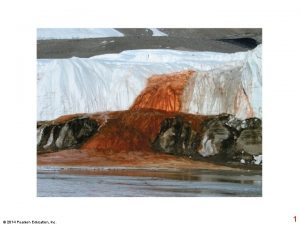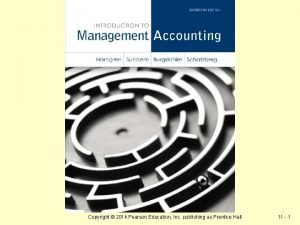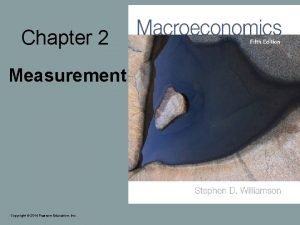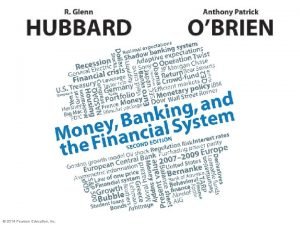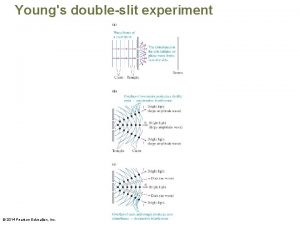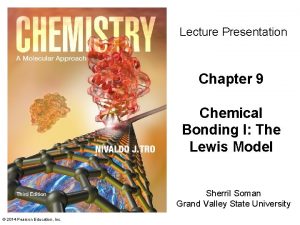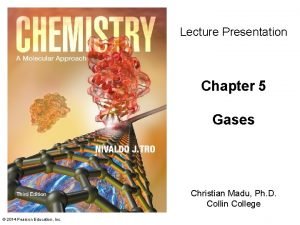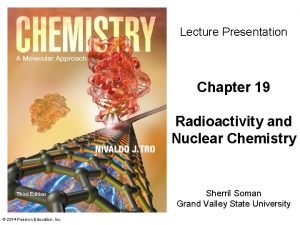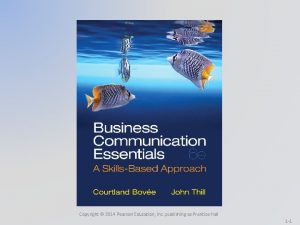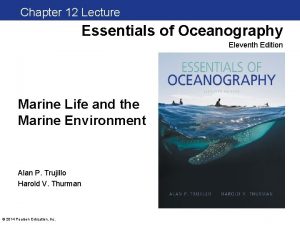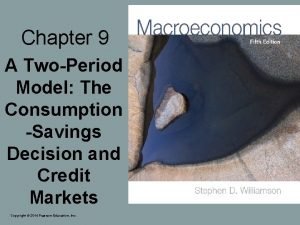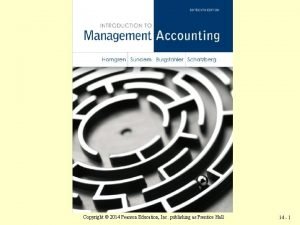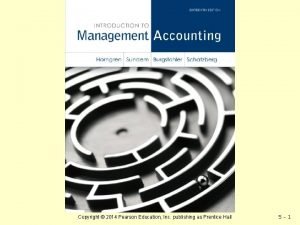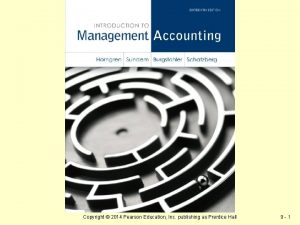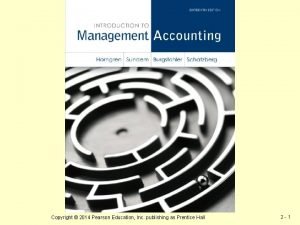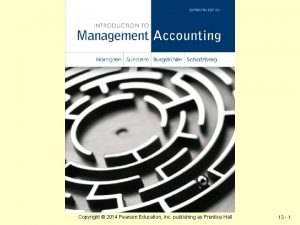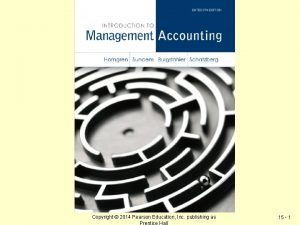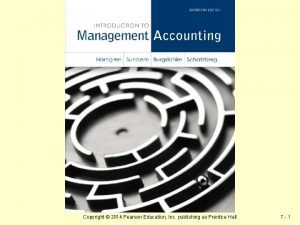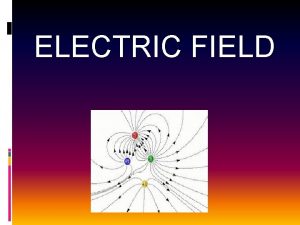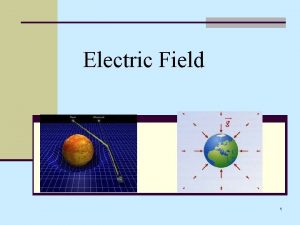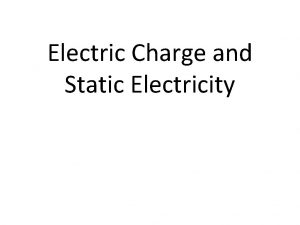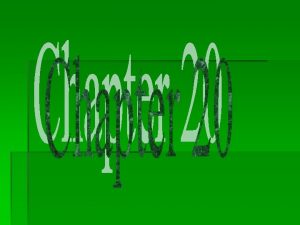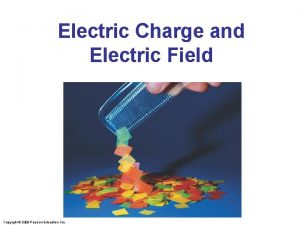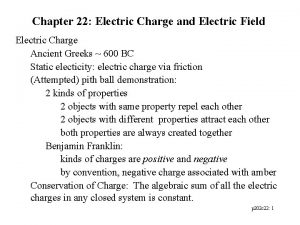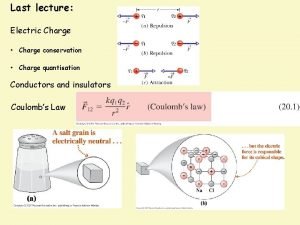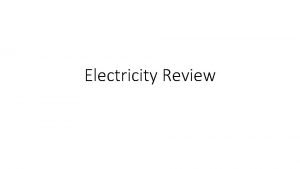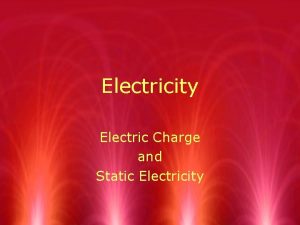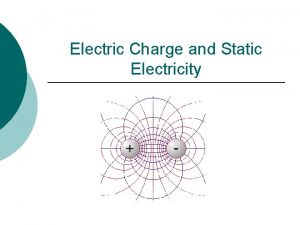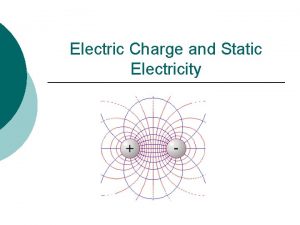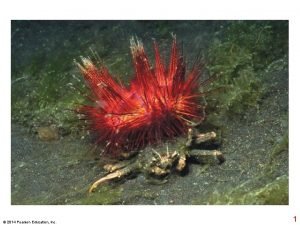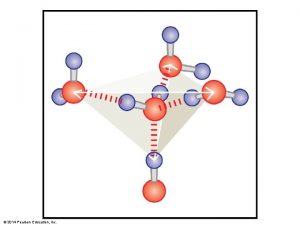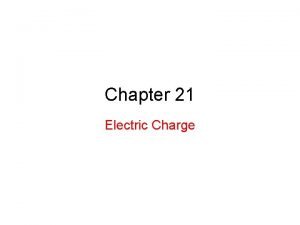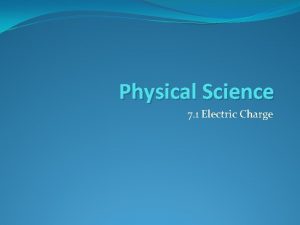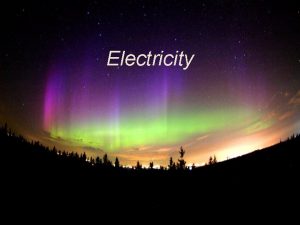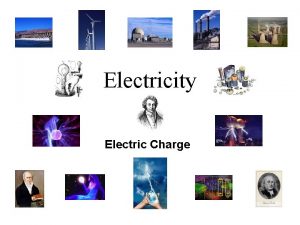Electric Charge and Electric Field 2014 Pearson Education


































- Slides: 34

Electric Charge and Electric Field © 2014 Pearson Education, Inc.

Contents of Chapter 20 • Static Electricity; Electric Charge and Its Conservation • Electric Charge in the Atom • Insulators and Conductors • Induced Charge; the Electroscope • Coulomb’s Law • Solving Problems Involving Coulomb’s Law and Vectors • The Electric Field © 2014 Pearson Education, Inc.

Contents of Chapter 20 • Electric Field Lines • Electric Fields and Conductors • Electric Forces in Molecular Biology: DNA Structure and Replication • Photocopy Machines and Computer Printers Use Electrostatics • Gauss’s Law © 2014 Pearson Education, Inc.

Static Electricity; Electric Charge and Its Conservation Objects can be charged by rubbing © 2014 Pearson Education, Inc.

Static Electricity; Electric Charge and Its Conservation Charge comes in two types, positive and negative; like charges repel and opposite charges attract © 2014 Pearson Education, Inc.

Static Electricity; Electric Charge and Its Conservation Electric charge is conserved—the arithmetic sum of the total charge cannot change in any interaction. © 2014 Pearson Education, Inc.

Electric Charge in the Atom: Nucleus (small, massive, positive charge) Electron cloud (large, very low density, negative charge) © 2014 Pearson Education, Inc.

Electric Charge in the Atom is electrically neutral. Rubbing charges objects by moving electrons from one to the other. © 2014 Pearson Education, Inc.

Electric Charge in the Atom Polar molecule: neutral overall, but charge not evenly distributed © 2014 Pearson Education, Inc.

Insulators and Conductors Conductor: Insulator: Charge flows freely Almost no charge flows Metals Most other materials Some materials are semiconductors. © 2014 Pearson Education, Inc.

Induced Charge; the Electroscope Metal objects can be charged by conduction: © 2014 Pearson Education, Inc.

Induced Charge; the Electroscope They can also be charged by induction: © 2014 Pearson Education, Inc.

Induced Charge; the Electroscope Nonconductors won’t become charged by conduction or induction, but will experience charge separation: © 2014 Pearson Education, Inc.

Induced Charge; the Electroscope The electroscope can be used for detecting charge: © 2014 Pearson Education, Inc.

Induced Charge; the Electroscope The electroscope can be charged either by conduction or by induction. © 2014 Pearson Education, Inc.

Induced Charge; the Electroscope The charged electroscope can then be used to determine the sign of an unknown charge. © 2014 Pearson Education, Inc.

Coulomb’s Law Experiment shows that the electric force between two charges is proportional to the product of the charges and inversely proportional to the distance between them. © 2014 Pearson Education, Inc.

Coulomb’s Law Coulomb’s law: (16 -1) This equation gives the magnitude of the force. © 2014 Pearson Education, Inc.

Coulomb’s Law The force is along the line connecting the charges, and is attractive if the charges are opposite, and repulsive if they are the same. © 2014 Pearson Education, Inc.

Coulomb’s Law Unit of charge: coulomb, C The proportionality constant in Coulomb’s law is then: k = 8. 988 × 109 N∙m 2/C 2 Charges produced by rubbing are typically around a microcoulomb: 1 µC = 10− 6 C © 2014 Pearson Education, Inc.

Coulomb’s Law Charge on the electron: e = 1. 602 × 10− 19 C Electric charge is quantized in units of the electron charge. © 2014 Pearson Education, Inc.

Coulomb’s Law The proportionality constant k can also be written in terms of ε 0, the permittivity of free space: (16 -2) © 2014 Pearson Education, Inc.

Coulomb’s Law Coulomb’s law strictly applies only to point charges. Superposition: for multiple point charges, the forces on each charge from every other charge can be calculated and then added as vectors. © 2014 Pearson Education, Inc.

Solving Problems Involving Coulomb’s Law and Vectors The net force on a charge is the vector sum of all the forces acting on it. © 2014 Pearson Education, Inc.

Solving Problems Involving Coulomb’s Law and Vectors Vector addition review: © 2014 Pearson Education, Inc.

Electric Field Lines The electric field can be represented by field lines. These lines start on a positive charge and end on a negative charge. © 2014 Pearson Education, Inc.

Electric Field Lines The number of field lines starting (ending) on a positive (negative) charge is proportional to the magnitude of the charge. The electric field is stronger where the field lines are closer together. © 2014 Pearson Education, Inc.

Electric Field Lines Electric dipole: two equal charges, opposite in sign: © 2014 Pearson Education, Inc.

Electric Field Lines Summary of field lines: 1. Field lines indicate the direction of the field; the field is tangent to the line. 2. The magnitude of the field is proportional to the density of the lines. 3. Field lines start on positive charges and end on negative charges; the number is proportional to the magnitude of the charge. © 2014 Pearson Education, Inc.

Photocopy Machines and Computer Printers Use Electrostatics Photocopy machine: • drum is charged positively • image is focused on drum • only black areas stay charged and therefore attract toner particles • image is transferred to paper and sealed by heat © 2014 Pearson Education, Inc.

Photocopy Machines and Computer Printers Use Electrostatics © 2014 Pearson Education, Inc.

Photocopy Machines and Computer Printers Use Electrostatics Laser printer is similar, except a computer controls the laser intensity to form the image on the drum © 2014 Pearson Education, Inc.

Summary of Chapter 20 • Two kinds of electric charge—positive and negative • Charge is conserved • Charge on electron: e = 1. 602 × 10− 19 C • Conductors: electrons free to move • Insulators: nonconductors © 2014 Pearson Education, Inc.

Summary of Chapter 20 • Charge is quantized in units of e • Objects can be charged by conduction or induction • Coulomb’s law: (16 -1) • Electric field is force per unit charge: (16 -3) © 2014 Pearson Education, Inc.
 Chapter 21 electric charge and electric field
Chapter 21 electric charge and electric field Chapter 21 electric charge and electric field
Chapter 21 electric charge and electric field Units for coulombs
Units for coulombs Chapter 21 electric charge and electric field
Chapter 21 electric charge and electric field Difference between charge and electric charge
Difference between charge and electric charge Difference between charge and electric charge
Difference between charge and electric charge 2014 pearson education inc
2014 pearson education inc 2014 pearson education inc
2014 pearson education inc 2014 pearson education inc
2014 pearson education inc 2014 pearson education inc
2014 pearson education inc 2014 pearson education inc
2014 pearson education inc 2014 pearson education inc
2014 pearson education inc 2014 pearson education inc
2014 pearson education inc 2014 pearson education inc
2014 pearson education inc 2014 pearson education inc
2014 pearson education inc 2014 pearson education inc
2014 pearson education inc 2014 pearson education inc
2014 pearson education inc 2014 pearson education inc
2014 pearson education inc Pearson education
Pearson education 2014 pearson education inc
2014 pearson education inc 2014 pearson education inc
2014 pearson education inc 2014 pearson education inc
2014 pearson education inc 2014 pearson education inc
2014 pearson education inc 2014 pearson education inc
2014 pearson education inc 2014 pearson education inc
2014 pearson education inc 2014 pearson education inc
2014 pearson education inc Ricardian equivalence
Ricardian equivalence 2014 pearson education inc
2014 pearson education inc 2014 pearson education inc
2014 pearson education inc 2014 pearson education inc
2014 pearson education inc 2014 pearson education inc
2014 pearson education inc 2014 pearson education inc
2014 pearson education inc 2014 pearson education inc
2014 pearson education inc 2014 pearson education inc
2014 pearson education inc 2014 pearson education inc
2014 pearson education inc






